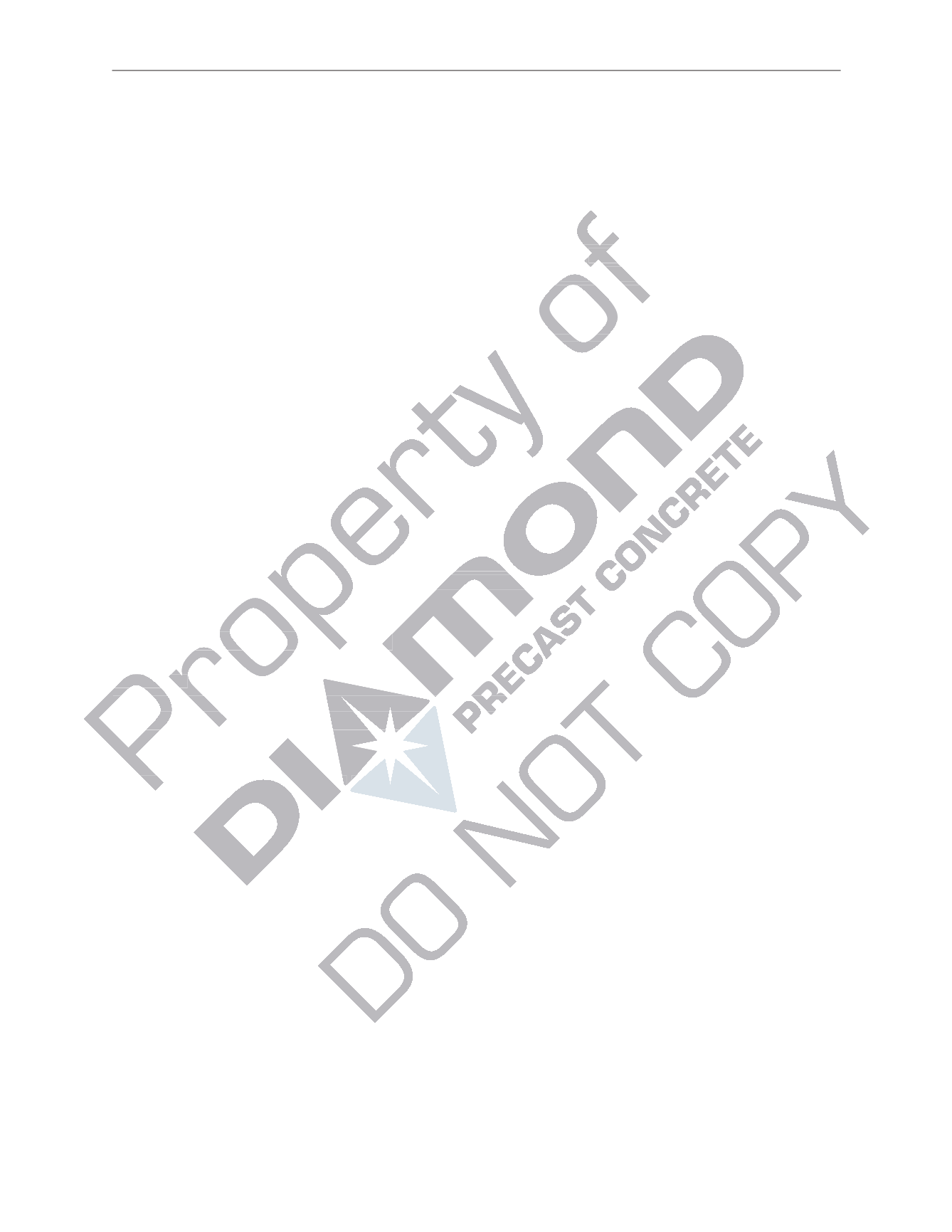

©
Canadian Standards Association
Precast concrete — Materials and construction
November 2009
(b) Each force-measurement system shall be capable of indicating loads directly or be accompanied by a
chart by which the reading can be converted into units of force.
(c) The indicating dials of gauges for initial and final stressing shall be at least 150 mm in diameter.
(d) Each force-measurement system shall be calibrated for the jacks, hoses, and connections with which it
is used or, alternatively, it shall be calibrated alone and friction losses in jacks, hoses, and connections
established by other means shall be recorded.
(e) The calibration of each prestress force-measurement system shall be performed by a registered
professional engineer or by a technician trained to perform such calibration by a registered
professional engineer. A calibration certificate for each system shall be signed by the engineer.
(f) The calibration shall be repeated whenever the system provides erratic results and at intervals not
longer than 6 months during regular usage and not longer than 12 months for other conditions of
use.
(g) Stressing equipment shall be calibrated in accordance with ASTM E4.
(h) The loads to be gauged shall be not less than one-quarter or more than three-quarters of the total
graduated capacity unless calibration data clearly establish accuracy over a wider range.
(i) Hydraulic gauge needles shall not fluctuate in such a way that reading becomes uncertain and shall
remain steady until the jacking load is released.
(j) Force-measurement systems shall be mounted near eye level and within 2 m of the operator. Gauges
shall be positioned so that readings can be obtained without parallax.
28.2.3.3
Manual hydraulic pumps shall not be allowed for stressing tendons.
28.2.3.4
Automatic hydraulic controls shall be capable of adjustment so that the jacking force will correspond to
the required load. The setting accuracy of automatic cut-off valves shall be verified whenever the results
are suspect.
28.2.4 Stringing of tendons
28.2.4.1
Contamination of tendons shall be prevented. After stringing and tensioning, the tendons shall be
inspected and, if found to be contaminated, shall be cleaned.
28.2.4.2
The stressing sequence shall avoid entanglement of tendons and minimize unbalanced loads on the beds.
28.2.4.3
Binding of tendons shall not occur during the stressing operation.
28.2.4.4
Tendons cast into prestressed elements shall be free of grip marks and other damage.
Notes:
(1)
Care should be taken where lengths of tendon previously gripped by tendon vices are incorporated within the length to
be stressed but outside of individual elements.
(2)
Significant nicks create local stress concentrations that can result in failure of the tendon during stressing.
28.2.4.5
Tendon anchors shall comply with
Clause 10.2.4
and shall be capable of anchoring stressing loads
positively and with a minimum of slippage.
Licensed for/Autorisé à Jed Friesen Sold by/vendu par CSA on/le June/18/2015.
~Single user license only. Storage, distribution or use on network prohibited. Permis d'utilisateur simple seulement.
Le stockage, la distribution ou l'utilisation sur le réseau est interdit.
















